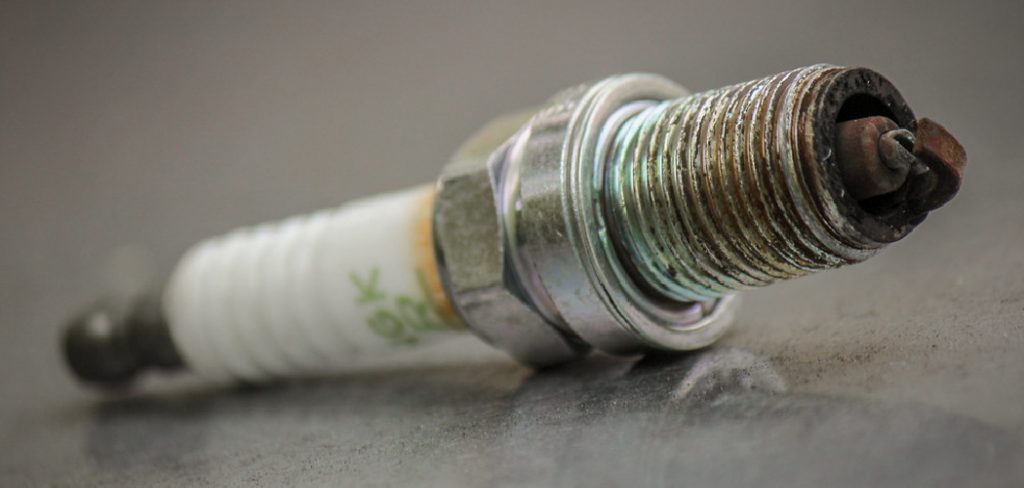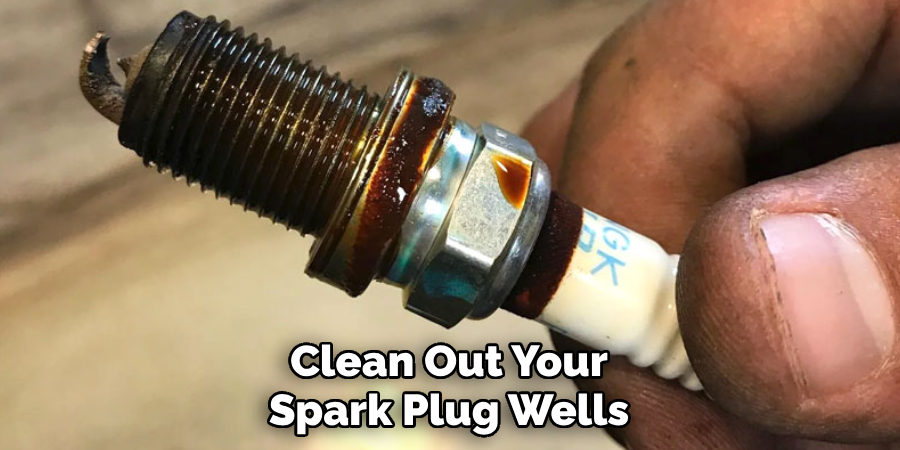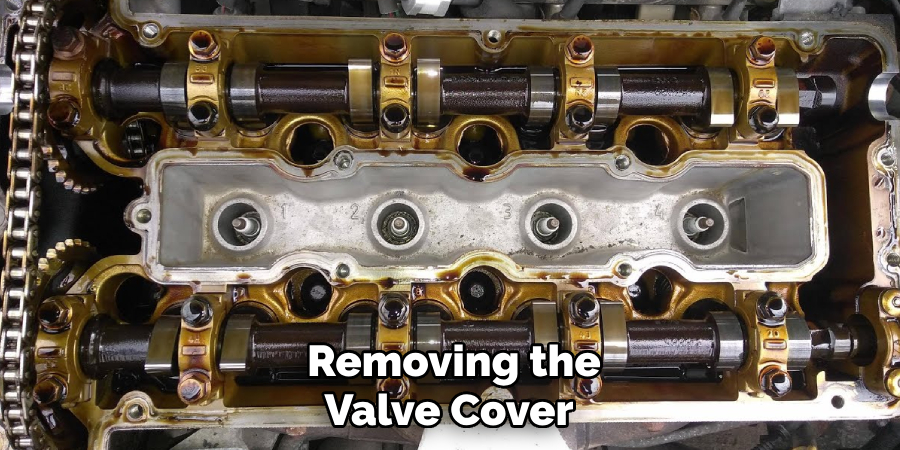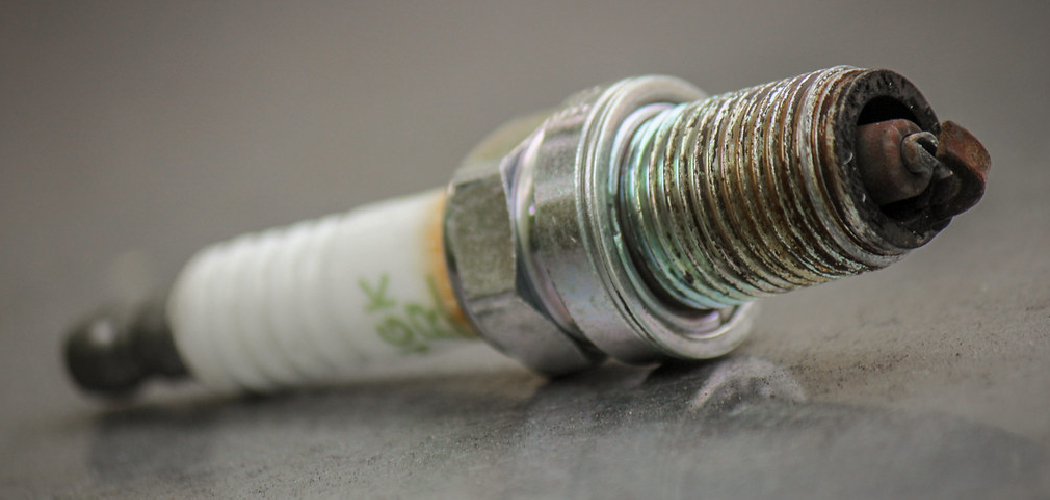No one enjoys dirty, grimy engine components that are difficult to access. Cleaning out your spark plug wells is a basic maintenance task, but it is often overlooked and they can accumulate years of built-up dirt and debris. Neglected spark plug wells not only look unsightly, but the accumulation can interfere with changing spark plugs and lead to other issues over time.

In this blog post, I’ll share my simple method for how to clean out spark plug wells. With just a few inexpensive tools and a little elbow grease, you can have your spark plug wells sparkling clean again. Following these steps will make future spark plug changes a breeze and help prevent more serious problems from developing in your ignition system.
Why Clean Out Spark Plug Wells?
Spark plug wells are the small holes in your engine’s valve cover where the spark plugs are located. These wells can collect dirt, oil, and other debris over time, which can interfere with the proper functioning of your spark plugs. It is important to clean out these wells regularly to ensure that your spark plugs have a clean and secure environment to operate in. Additionally, keeping the wells clean can help prevent other issues such as misfires and difficulty starting your engine.
Tools and Materials You Will Need to Clean Out Spark Plug Wells
- A screwdriver or a socket wrench
- Spark plug socket (if necessary)
- Shop vac or compressed air canister
- Long brush with stiff bristles
- Clean rags or paper towels
Step-by-step Guidelines on How to Clean Out Spark Plug Wells
Step 1: Prepare Your Work Area
Before starting, make sure you have enough room to access the spark plug wells without any obstructions. It is also a good idea to cover your engine with an old towel or tarp to prevent debris and dirt from falling inside while cleaning. Preparing your work area will make the cleaning process easier and prevent any damage to other engine components.
Step 2: Remove the Spark Plug Wires
If your spark plug wires are connected to the valve cover, gently remove them from each spark plug and move them out of the way. Take note of which wire goes to which spark plug so you can easily reattach them later. If your spark plugs are connected directly to the coil pack, you can skip this step. While you have the spark plug wires disconnected, it is a good idea to check them for any signs of wear or damage and replace them if necessary.
Step 3: Remove the Valve Cover
Using a screwdriver or socket wrench, carefully remove the bolts that hold the valve cover in place. Once the bolts are removed, gently lift the valve cover off of the engine and set it aside on a clean surface. Be careful not to damage the gasket or any other components on the valve cover. This is a good opportunity to inspect the gasket and replace it if needed.

Step 4: Inspect the Spark Plug Wells
With the valve cover removed, you should be able to see the spark plug wells. Take a close look at each well and remove any large debris or buildup with your hands or a clean rag. This will help prevent anything from falling into the engine when you start cleaning. If you notice any oil or dirt buildup in the wells, it is a good idea to clean them out before proceeding.
Step 5: Use Compressed Air or a Shop Vac
Using either a compressed air canister or a shop vac, carefully blow or suck out any remaining debris in the spark plug wells. Be gentle and take care not to scratch or damage the inside of the well. You may need to use a long brush with stiff bristles to loosen and remove stubborn dirt. Using compressed air or shop vac is an efficient way to thoroughly clean out the spark plug wells.
Step 6: Wipe Down the Spark Plug Wells
After all of the debris has been removed, take a clean rag or paper towel and wipe down the inside of each spark plug well. This will help remove any last bits of dirt or debris that may have been loosened during cleaning. It is important to make sure the wells are completely free of any contaminants before reassembling.
Step 7: Reassemble and Test
Once the spark plug wells are clean, carefully place the valve cover back on top of the engine and secure it with the bolts. Reattach any spark plug wires that were disconnected and make sure they are connected correctly. Start your engine to test for proper functioning and check for any signs of oil leaking from the valve cover. If everything looks good, congratulations – you have successfully cleaned out your spark plug wells!
Following these simple steps to clean out your spark plug wells will not only improve the overall appearance of your engine but also ensure that your spark plugs are functioning at their best. Regular maintenance like this can help extend the life of your ignition system and save you money on costly repairs in the long run. So next time you change your spark plugs, make sure to take a few extra minutes to clean out those spark plug wells. Your engine will thank you!

Additional Tips and Tricks to Clean Out Spark Plug Wells
1. If you notice excessive oil buildup in your spark plug wells, it may be a sign of a more serious issue such as a leaking valve cover gasket. In this case, it is important to address the issue before cleaning out the wells.
2. For stubborn dirt and debris, you can use a degreaser or engine cleaner to help loosen and remove buildup in the spark plug wells.
3. It is recommended to clean out your spark plug wells every 30,000 miles or as part of your regular engine maintenance routine.
4. If you are uncomfortable with removing the valve cover yourself, it is best to seek professional help to avoid any potential damage to your engine.
5. While cleaning the spark plug wells, take a moment to inspect the condition of your spark plugs and replace them if necessary. This will ensure optimal engine performance.
6. Consider adding a dielectric grease to the inside of the spark plug wells before reinserting the spark plugs. This can help prevent moisture from entering and potentially causing issues with your ignition system.
7. Keep an eye out for any abnormal signs while cleaning out your spark plug wells, such as corrosion or damaged components. These may require further investigation and maintenance.
8. Regularly cleaning out your spark plug wells can also help improve fuel efficiency and reduce emissions from your vehicle.
9. If you are unsure about any steps in the cleaning process, refer to your vehicle’s manual for specific instructions for your make and model.
10. Remember to always wear appropriate safety gear, such as gloves and eye protection, when working on your vehicle. Safety should always be a top priority.

By following these additional tips and tricks, you can ensure that your spark plug wells are thoroughly cleaned and maintained for optimal engine performance. Keep in mind that regular maintenance and cleaning will not only improve the appearance of your engine but also help prevent costly repairs in the future. Taking care of your vehicle’s ignition system is crucial for a smooth and efficient ride, so don’t forget to give some attention to those spark plug wells during your next engine check-up! Happy cleaning!
Frequently Asked Questions
Can I Use Any Type of Cleaner or Degreaser on My Spark Plug Wells?
It is best to check your vehicle’s manual for recommended cleaners and degreasers. Using the wrong product may cause damage to your engine.
How Often Should I Clean My Spark Plug Wells?
It is generally recommended to clean your spark plug wells every 30,000 miles or as part of your regular engine maintenance routine. However, if you notice excessive buildup or have any concerns, it is best to clean them more frequently.
Can I Clean the Spark Plug Wells Without Removing the Valve Cover?
It is not recommended to clean the spark plug wells without removing the valve cover as it can be difficult to thoroughly clean and inspect them. Additionally, there is a risk of debris falling into the engine if the valve cover is not removed.

Why Is it Important to Clean the Spark Plug Wells?
Cleaning the spark plug wells helps to prevent buildup and debris from affecting the performance of your spark plugs. It also allows for proper sealing and prevents any potential issues with moisture or oil leakage into the engine. Regular maintenance like this can help extend the life of your ignition system and save you money on costly repairs. So don’t forget to give those spark plug wells some attention during your next engine check-up!
Conclusion
Now you know how to clean out spark plug wells and why it is important to include them in your regular engine maintenance routine. By following these simple steps and additional tips, you can ensure that your spark plug wells are clean and free of debris for optimal engine performance.
Don’t forget to check your vehicle’s manual for specific instructions or seek professional help if needed. Remember, taking care of your vehicle’s ignition system is crucial for a smooth and efficient ride. So next time you change your spark plugs, don’t forget to give those spark plug wells some extra attention! Happy cleaning!

